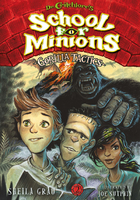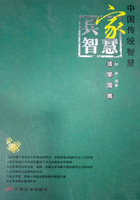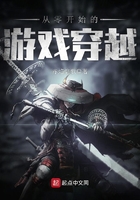Architeuthis ON ICE
And God said: Let the waters teem with countless living creatures.
—GENESIS
The morning of June 25, 2008, wasn't a good one on Monterey Bay. It was a little more than a year before Julie and her research team came upon the huge shoal of Humboldt squid.
That early summer morning, the shark hunting hadn't been great. The weather wasn't holding up. The bay was choppy. The wind was picking up. Conditions were going from bad to worse, and so, even though it was only around 9 a.m., the Pelagic Shark Research Foundation's Sean Van Sommeran decided to call it a day. No shark tagging on this trip. He was about to head back to Santa Cruz. Then, like Theophilus Piccot more than a century earlier, Sean spotted something odd. A large object was on the surface of the sea, rising and falling in the heightening swells. A number of birds were battling over something valuable. What Van Sommeran saw several hundreds yards off seemed to him to have all the features of a feeding event. Perhaps, he thought, it involved a shark. Maybe he'd get at least one animal tagged before heading home. Otherwise, all that expensive boat fuel would be wasted.
As he drew closer, Sean could see a slick on the water's surface. Gulls and shearwaters and even a black-footed albatross were having a field day. He realized the birds were feasting on some kind of animal, alive or dead. He thought it might be a marine mammal, perhaps an elephant seal, since the boat wasn't that far from A?o Nuevo Island, a favorite haul-out for the massive creatures, which can weigh as much as 5,000 pounds.
As they closed in, the birds drew back. Sean saw a large, moldering mass just beneath the small whitecaps. Bits and pieces of torn and shredded white and red protoplasm were still attached to the main body.
Seabirds love eyes. Those delectably soft, gooey organs are usually the first to be eaten. And in this carcass they were indeed gone. The stomach had been torn away as well. Dangling from the main body of disintegrating flesh were ten appendages, none of which seemed intact. Just a bit of what once might have been a fin rose from time to time above the waves.
At first Sean thought the decaying specimen was a Moroteuthis robusta, a robust clubhook squid. Said by some to be the ocean's third-largest squid, after the giant and colossal squids, Moroteuthis can reach human-size lengths if measured from tentacle tip to mantle tip. While they aren't as common in the bay as market squid, Loligo opalescens, neither are they rare. He'd seen many others.
Then Sean took a second look. The specimen, shredded as it was, seemed too big to be a clubhook.
"That might be an Architeuthis," he said, thinking aloud. "It's gotta be. It's so big."
"What's that?" some students along on the trip asked him.
Van Sommeran was thrilled. He'd read about the giant squid, but, to his knowledge, there hadn't been any recovered in Monterey Bay. To him, the find was better than a gold strike.
He explained the specimen's value to the students on board: Only a few giant squid had been identified along the California coastline. He knew the teuthologists would want to take a look at it. He regretted the loss of the specimen's eyes. The skin still seemed to be changing colors. He figured that he might have missed finding a live animal—or at least one with intact eyes—by only a few minutes. Still, he knew he was in possession of a scientific treasure trove. His first thought was that the animal might have been killed by a shark, but no one would ever be able to pinpoint the exact cause of death.
Sean picked up a gaff and leaned out over the water, gently pulling the carcass toward him, trying to secure it without further damaging it. Two crew members picked up nets and, together, with part of the carcass in each net, hauled it on board. They beelined back to Santa Cruz.
He started calling his contacts.
"I've got an Architeuthis," he said triumphantly.
"How do you know?" one person asked.
Duh, Sean thought to himself. "You don't need a guidebook to know an Architeuthis when you see one."
The scientists who met him on the dock confirmed his find. They were as excited as he was. Only four other such specimens had been recorded on the California coast, and none of those had been found recently. Marine science has come a long way since the days of Theophilus Piccot, when the most pressing question was merely to prove the existence of such a huge skeleton-free creature. Modern science had developed a number of analytical techniques that could be applied to the squid, dead though it was, including, of course, DNA analysis. This dead animal was bound to be the center of a lot of scientific attention.
Theophilus Piccot's squid may have marked the beginning of serious scientific research into the giant squid, but our specific knowledge hasn't increased much over the past hundred years. With the invention of deep-sea submersibles, professional and public interest has grown, but some important and rather basic questions remain to be answered. One of the most pressing: "Just what is a giant squid?" Incredibly, more than a century after the photo of Piccot's squid appeared in the British science journal, scientists have yet to determine how many species of giant squid, Architeuthis, exist in the world.
The word species can be either singular or plural. It usually denotes a particular group of animals that can breed and produce offspring, and these offspring can also produce offspring. Whereas a horse and a donkey can produce a mule, the mule is sterile and cannot produce its own offspring. Therefore, a horse and a donkey are considered two separate species.
A species is given two names, both taken from the Latin language and by convention italicized. The first name denotes the animal's genus, a grouping of very close relatives. The second denotes the specific species. The easiest way to think about this, the Smithsonian's Clyde Roper suggests, is to think about a car—a Ford Fusion, perhaps. "Ford" would be the genus; "Fusion" would be the specific species. By convention, the first word of the scientific name is capitalized; the second is not.
Over the past several centuries, whole scientific careers have been based on debating which animals belong to which genera ("genera" is the plural of "genus") and whether two very similar animals belong to the same species or should be classified as two separate species. To the outside world, these debates may seem like medieval how-many-angels-on-a-pinhead debates, but the scientific naming of an animal is more than just esoteric. It is the foundation of the biological sciences.
When scientists talk about various organisms, they have to be sure they're all talking about the same thing. Species may look alike and even seem to the casual observer to be exactly the same, but looks can be deceiving. Two look-alikes may turn out to behave quite differently. Each individual species has something special to offer.
Evolution has blessed Julie's Dosidicus gigas, for example, with unusual sucker rings, sharp enough to easily slash a person's arm or leg. The squid's beak and sucker rings have the strength and sharpness of well-manufactured steel, yet they're wholly organic. This remarkable fact is providing materials designers with clues as to how to design new substances that remain hard and sharp, like strong metals, but are made entirely of protein rather than of elements mined from the earth. Researchers hope that they will eventually be able to design a material that mimics this wholly organic structure. If they can, the benefits to human medicine will be profound. Some investigators, for example, hope to be able to use materials like this to create organic aids to amputees.
That's why species conservation is important—not only because of conservation itself but also because those species are gold mines of possibility. And in order to ensure the survival of these species, scientists must know as much as possible about their needs. "Each species has slightly different requirements for life and for survival," Roper said. Several species of squid that look the same may spawn at different times, or perhaps one group will spawn and attach its eggs to the seafloor while another will release its fertilized eggs into the water. Or one species may possess the key to curing a human illness while its closely related cousin does not. "You really need to know the biology and the characteristics of each species," Roper said. "In medicine, so many animals, of course, are just extremely important in providing pharmaceuticals. In closely related species, one might be incredibly effective in treating a particular disease, but another that's very similar might be totally ineffective."
A species name also helps bring clarity to some very messy human discussions of the natural world. The common name for an animal varies from language to language and from culture to culture, but the Latin name, the scientific name, is universal. This eliminates confusion.
This is particularly true in the case of the giant squid, with its centuries-old history of so many different popular names for what might well have been the same animal. Since the mid-1800s, the giant squid has been given many different scientific names as well—at least twenty, denoting as many as twenty different species. But few scientists genuinely believe that the ocean has as many as twenty different giant squid species. The confusion primarily stems from the lack of specimens to study and the lack of time and money to do research.
The question is unlikely to be settled officially anytime soon. Eventually, when funding becomes available, DNA analysis will probably be called into play. Meanwhile, some scientists believe there is only one Architeuthis species spread throughout the earth's ocean, while others hold that there may be many. Most experts, according to Roper, believe that there are three separate species—one based in the North Atlantic, one based in the North Pacific, and one based in the Southern Ocean, the contiguous ocean surrounding Antarctica.
Only hours after Sean Van Sommeran brought his tattered specimen on board, Julie Stewart got a surprise phone call from her colleague John Field. The squid was going to be dissected at Field's National Marine Fisheries Service lab on the north coast of Monterey Bay, in Santa Cruz. There would be lots of scientists at the party, among them her doctoral adviser, Bill Gilly, and Julie was invited. Field would be the lead author of the paper that would report their work to the rest of the scientific community.
The next day the Architeuthis carcass was hauled out of Field's subzero freezer and laid on the cold steel table. Some of the researchers gathered around the table like a bunch of television doctors performing an autopsy, although jeans were more common than white coats at this surgical procedure. Other scientists, observing officials, television cameras, print reporters, and other hangers-on milled about. Julie found herself in the middle of a scientific and media frenzy. In her casual clothes, without a chance to gather her thoughts, she was called upon to explain her research in front of very demanding television crews.
Word had spread fast. Everyone wanted to be there. Researchers from San Francisco's California Academy of Sciences had driven several hours to attend the gala. When it came time to dissect, Julie pulled on her latex gloves and stepped up to the table. Once again, her hair was pulled back into a ponytail. She dug into the carcass, trying to ignore the caustic smell of ammonia.
She carved out the gills. She wanted to do a comparison between the gills of this giant squid and those of her own longterm research subject, the Humboldt. Her hope was to better understand the details of how squid gills work. When she first thought about what questions to ask for her doctoral thesis, Julie was interested in how Humboldt squid managed to survive for long periods of time in parts of the ocean that had low levels of oxygen.
While the ocean contains oxygen almost everywhere, it is not evenly distributed. Surface waters contain almost as much oxygen as our atmosphere, but levels decrease as you descend—to a point. Then levels begin to rise again. This middle layer, the oxygen minimum layer, is not static. In any one location, like everything else in the ocean, it fluctuates. Over time, the layer may shift up or down hundreds of feet, depending on factors like water temperature.
One of the marvelous things about the Humboldt squid is its ability to move quickly from layers of water with low levels of oxygen to layers with high levels of oxygen, so it has a larger habitat range than many sea species. Some other sea species are able to survive for a time in low-oxygen environments if necessary, but it's possible that the Humboldt and some other cephalopods may sometimes actually seek these places out as refuges, since they can't easily be followed by predators. The sperm whale can dive into these depths to follow and catch squid prey, but only because this whale is able to hold its breath underwater for anywhere from thirty to ninety minutes. Most other squid predators do not enjoy this particular talent and thus cannot survive for long in low-oxygen layers. The ability to survive in water with low levels of oxygen may be yet another reason why cephalopods have survived so many extinction events.
Julie also wanted to know how Dosidicus could move so quickly from layer to layer. The species' ability to travel quickly up and down the water column, through various high- and low-oxygen layers, would be somewhat equivalent to our being able to jog from sea level to a 20,000-foot peak without feeling oxygen-deprived. Perhaps, Julie theorized, the Humboldt has particularly large gills and can take in more oxygen than, say, market squid—squid that tend to live closer to the oxygen-rich surface. Julie wanted to compare the Humboldt's gill size to that of other squid, octopuses, and cuttlefishes. Thus, this Architeuthis specimen was like manna from heaven. She could include what she learned about the gills of this rarely studied animal in her thesis.
Around the dissection table, the scientists began to divvy up the Architeuthis body parts. Field himself regretted not having the stomach to study. His specialty is looking at the stomach contents of animals that live in the sea in order to find out what they eat.
Other scientists regretted the lack of eyes and gonads, which had been picked over quite thoroughly by greedy seabirds. "I guess those are the most delicious parts," Julie decided.
Samples were taken to see if toxins had accumulated in the specimen. The amount of mercury in the body tissue could help scientists figure out where Architeuthis sits in the food chain. The more mercury accumulated by the animal, the higher the animal is in the eat-or-be-eaten hierarchy. Predator fish like large tuna and sharks usually have much more mercury in their body tissue than do prey fish like herring. The toxicology results surprised the scientists. The giant squid flesh contained much lower levels of mercury and other toxins than they expected.
Field explained later that "in general, the contaminant levels from the tissue samples all suggested low levels in the Architeuthis, which was interesting, as many other animals sampled from Monterey Bay have been shown to have high to very high contaminant loadings." The scientists speculated that the giant squid spent very little time near the Bay shoreline. But since little is understood about how Architeuthis metabolizes food, the jury is still out on what the results mean.
Lou Zeidberg of UCLA, who often works with Gilly and Julie on various projects, wanted to examine the specimen for statoliths—minuscule structures made of calcium carbonate, like seashells. Small enough to fit easily on the tip of your finger, these little structures, part of the vestibular system that helps the animal tell up from down in an ocean environment, behave somewhat like the balancing apparatus in our own ears. Fish have similar objects, called otoliths. Statoliths and otoliths differ from species to species. Experts can look at a statolith or otolith and identify the species it came from. "We can also measure them and extrapolate how big the prey species was," Zeidberg explained. "You find these in the squid stomach, and find that perhaps it's 4 millimeters long, and know that it came from a fish that's 40 centimeters long. John Field looked at all the stomach contents of Dosidicus and extrapolated the size of the hake that the squid were eating. This way, you can figure out the food web in a much more powerful manner."
Scientists have also learned to use statoliths, which may be retrieved either from a predator's stomach or from the body of a dead specimen, to estimate the age of a squid. Statoliths grow over the course of an animal's life, putting on a small layer each day. Experts can read the layers and age the specimen rather like we can read the age of a tree by counting the rings. It sounds simple, but there's an art to the process. Cutting a statolith for study is like cutting a diamond: Before it will reveal its secrets, it must be properly prepared. This requires delicate craftsmanship, since the three-dimensional, irregularly shaped object may easily be destroyed. Despite its anomalies, the statolith has two basic sides, which must be carefully filed to reveal the tree ring–like lines inside. In a sense, the tiny object must be peeled down to expose the layers. "A lot of people find it helpful to think of an onion as an analogy," Zeidberg said. The scientific craftsmen must be careful to cut at only certain angles so as not to destroy the layers themselves.
Owing to a scarcity of data, how long Architeuthis lives is currently a matter of debate. A few researchers think the animal, which lives in deep, cold waters, might live as long as twelve years. Others suggest the upper age limit might be three years. Acquiring and studying a large number of Architeuthis statoliths could help resolve the disagreement.
Zeidberg sat firmly in the three-year camp, but he wanted to know for sure. He dug the statoliths out of the Architeuthis head, then took them back to Gilly's Monterey laboratory. Two experts in Architeuthis statoliths, a husband-and-wife team, just happened to be in town for a conference. Zeidberg joined with them in trying to age the giant squid specimen, but the right equipment wasn't available. The Gilly lab is well equipped with modern technology, but it lacked the precise technology—a very high-powered microscope with certain very specific types of lighting—to prepare statoliths. The couple took one of the statolith specimens back to the Falklands, where their own lab had the appropriate tools. As of this writing, their findings haven't been published.
During the Architeuthis dissection, Gilly was in his element. He hadn't been feeling well when he'd been called in, but all the excitement cheered him up. Wearing two pairs of glasses, a regular pair on his nose and a jeweler's visor with magnifying lenses on his forehead, he spoke to the television cameras. "This is a miraculous thing," he said. "Only four or five of these things have been found in the history of California science as far as we know."
Gilly was surprised to find chromatophores—cells that contain color—on what seemed to be interior muscular tissue. Julie had also found chromatophores on the gills themselves. "Unusual," she mused. Squid, octopuses, and cuttlefishes have a wide palette of colors on their skin that they can flash under a variety of conditions, but these are believed to be modes of communication.
"Why," Gilly wondered, "would there be chromatophores inside the animal?" There are several other species of squid that also have chromatophores on the inside of their bodies, but no one knows what function those chromatophores might fulfill. Gilly also noted that the specimen's ganglia—clusters of nerve cells—seemed to be proportionally smaller than equivalent clusters in the Humboldt.
"Does that mean that Architeuthis is less intellectually advanced than the Humboldt?" I asked.
He said he just couldn't answer such a question. Too little is known about cephalopod intelligence to make such comparisons.
Gilly cut off a piece of flesh and tasted it. For science's sake. Previously Clyde Roper had grilled up some long-frozen giant squid flesh for a dinner with friends and colleagues in honor of one of his students who had just passed his doctoral exams. This was in St. John's, Newfoundland, not far from where Piccot and Squires chopped the tentacles off their giant squid more than a century earlier. When Roper handed his hot-off-the-grill delicacy around to the dinner guests, it turned out that he was the only diner willing to partake. He didn't eat much. Architeuthis flesh tasted like ammonia, something like floor cleaner, perhaps, he declared. Since his experiment, other scientists had concurred with Roper's "floor cleaner" finding.
However, Gilly disagreed with that reigning scientific wisdom. He had changed his vehicle's battery terminals more than once in his life and accidentally gotten battery acid on his lips. It wasn't a pleasant experience. The giant squid flesh, he said, reminded him of that.
"But the texture was nice," he said later. "The difference may be in the fact that we had it sashimi-style and Clyde had cooked it. We need to have a group tasting. After all, it's all in the presentation."
One of the most important tasks of the field scientist is to properly preserve specimens for study by later generations. In the past hundred years or so, all over the world, vast libraries of such information have been archived in dusty museum drawers, university basements, and, in modern times, ultra-deep-freeze freezers.
These archived specimens will provide answers to questions scientists don't yet even know they want to ask. In 1835, for example, Charles Darwin collected and sent back for archiving a mockingbird from the island of Floreana in the Galápagos. Several decades later, the species became extinct. Today, scientists are using the genetics from the archived bird to reestablish the species on the island.
And so, what remained of Sean Van Sommeran's Architeuthis was put in plastic bags and preserved in a freezer at -20° Celsius. Eventually, it was sent to the Santa Barbara Museum of Natural History, an institution with scientific roots reaching back to the days of Theophilus Piccot. There it was archived on ice by Eric Hochberg, a world expert on cephalopod taxonomy.
Only a few months after Sean Van Sommeran brought his tattered giant squid to the scientific team, a craigslist posting appeared: "Free Giant Squid. Location—the Ocean. Can no longer afford food costs, due to recession. To good home only." There was only one response following the entry: "I would take it in, but I'm not sure if it will get along with our cats."















